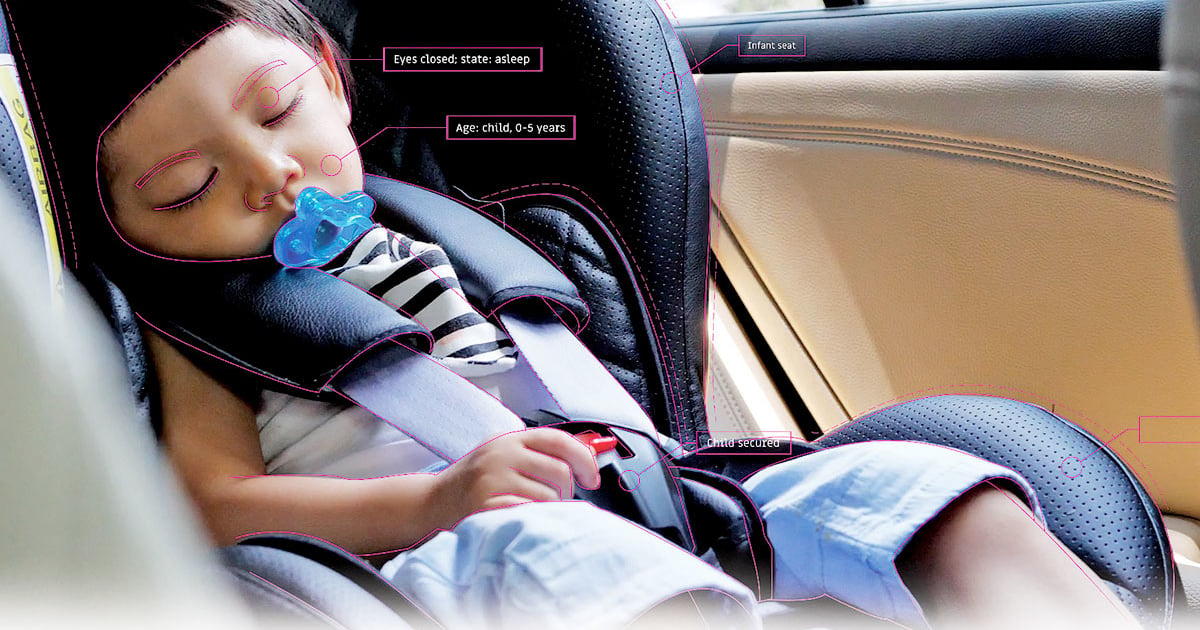
Automotive in-cabin technology and occupant monitoring systems are set for a major expansion with the development of software-defined vehicles.
Smart Eye’s Driver Monitoring System is already counting on that. A recent update of its system, which is installed in more than 1 million vehicles globally, will remotely monitor drivers’ heart rates and respiration rates.
That and similar technologies will become as common as airbags and seat belts, according to Massachusetts Institute of Technology transportation researcher Bryan Reimer.
Vehicles with head-up displays featuring holographic technology, sensors that could detect if a driver left a baby in a car or mirrors that can sense if a driver is drowsy are among the many in-cabin sensors unveiled by automakers in recent years and are just a sampling of what will become available, Reimer said.
Reimer said he could even envision a sensor that warns someone not to drive after monitoring biometrics detect that they have just had an emotional argument and should not be operating a motor vehicle.
“I think you have to look at this like seat belts: First they came in a few cars in the ’50s, and then every car had then in the ’70s,” said Smart Eye CEO Martin Krantz. “The airbag came in a few cars in the ’80s, and in the ’90s every car had them. Now every car has cameras looking out; soon they will all have cameras looking in.”
European regulations
Smart Eye, whose customers include Audi, BMW, GM, Volvo and Polestar, updated its Driver Monitoring System in response to European regulations that go into effect in 2024 and 2026, Krantz said.
The regulations require new vehicles to have intelligent speed assistance sensors, camera or reverse detection systems that use sensors, driver drowsiness and distraction warning systems, event data recorders and an emergency stop signal.
Smart Eye believes other countries will enact similar regulations, Krantz said.
“The regulators in Europe have caught on and said, ‘Oh, this technology is available,’ ” Krantz said. “There are 35,000 lives lost on European roads every year. We want to save those lives.”
Two trends are developing with in-cabin technology. One focuses on making what drivers do in a vehicle intuitive, easier and safer, Reimer said.
Reimer used the example of drivers making phone calls in their vehicles.
“If you’re going to place that phone call using an embedded system with larger fonts, bigger type, it’s a lot more attentionally manageable than the smartphone,” he said.
The other focuses on gaining drivers and passengers’ attention rather than improving driver safety.
“There are another group of organizations out there that absolutely appear to be trying to cram more and more features in there and more and more apps in there for stuff that may very well not be socially acceptable,” Reimer said.
Companies such as Facebook and Apple are developing in-cabin features that don’t improve safety and prevent distraction, he said.
Reimer, who has worked with autonomous vehicle software company Aptiv on in-cabin technology and features, said sensors and cameras that make the driving experience safer represent where in-cabin technology should be headed.
“Do I need to be making Facebook posts, reading Facebook, or searching the web or asking Siri for the latest news while I’m traveling 75 miles or 70 miles an hour on the highway?” he said.
However, the emergence of video games as an in-cabin feature, deemed by some as safe and others unsafe, does not worry Reimer.
“I’m not saying all of it, but most of it is very tuned in with trying to provide games on these systems in the vehicle for you to play while it charges parked,” he said.
Automakers, technology companies and society at large need to discuss the ramifications of emerging in-cabin technology, Reimer said.
“I think we need to have a deep conversation as a society on what we should be doing as we are fully responsible for the safety, navigation and safe mobility of personal vehicles,” he said.